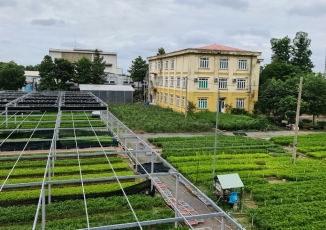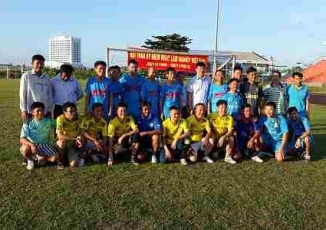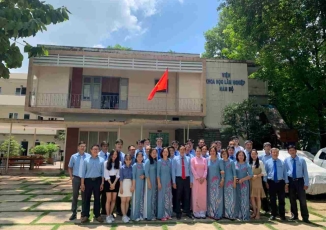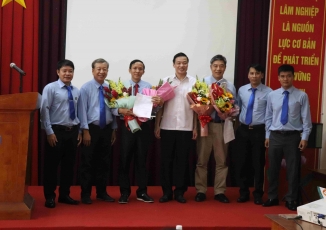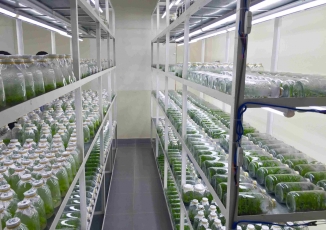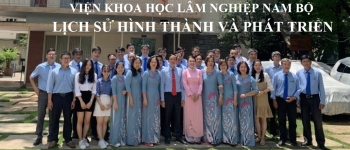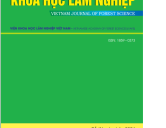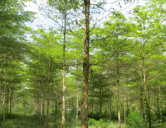Neurozerra conferta (Lepidoptera: Cossidae) damaging Melaleuca plantations in Vietnam and its biological control
Neurozerra conferta (Lepidoptera: Cossidae) damaging Melaleuca plantations in Vietnam and its biological control
NGUYEN MINH CHI1, VU DINH HUONG2, DUY LONG PHAM1, LE VAN BINH1, NGUYEN VAN LUU2, KIEU MANH HA2, VU VAN LOI1, ROMAN V. YAKOVLEV3, 4*
![]()
![]() 1 Forest Protection Research Centre, Vietnamese Academy of Forest Sciences, Hanoi 11910, Vietnam. https://orcid.org/0000-0002-2345-2398, https://orcid.org/0000-0002-0810-474X, https://orcid.org/0000-0003-4614-9436, https://orcid.org/0000-0002-9645-6867
1 Forest Protection Research Centre, Vietnamese Academy of Forest Sciences, Hanoi 11910, Vietnam. https://orcid.org/0000-0002-2345-2398, https://orcid.org/0000-0002-0810-474X, https://orcid.org/0000-0003-4614-9436, https://orcid.org/0000-0002-9645-6867
2 Forest Science Institute of South Vietnam, Vietnamese Academy of Forest Sciences, Ho Chi Minh 72100, Vietnam. ![]() https://orcid.org/0000-0001-8289-6821,
https://orcid.org/0000-0001-8289-6821, ![]() https://orcid.org/0000-0001-5671-2566,
https://orcid.org/0000-0001-5671-2566,
![]() https://orcid.org/0000-0002-8516-0841
https://orcid.org/0000-0002-8516-0841
3Altai State University, pr. Lenina 61, Barnaul, 656049 Russia.
4 Tomsk State University, Lenina Prospekt 36, 634050 Tomsk, Russia.
* Corresponding author. E-mail: yakovlev_asu@mail.ru; ![]() https://orcid.org/0000-0001-9512-8709
https://orcid.org/0000-0001-9512-8709
Received 30 November 2022 │ Accepted by V. Pešić: 8 December 2022 │ Published online 9 December 2022.
Abstract
Melaleuca leucadendra and M. cajuputi are grown widely in Vietnam, with plantation areas in 2020 of 32,000 ha and 36,000 ha respectively. A stem borer, Neurozerra conferta (Walker) (Lepidoptera: Cossidae), has significantly damaged plantations of both species. Field surveys in 2021 found N. conferta damage to M. leucadendra in the four provinces of Ninh Binh, Long An, Dong Thap and Kien Giang with a damage incidence (P%, percentage of plants attacked) of 22.4– 33.2% and an average damage index (DI) of 0.77–1.01. In Long An province, surveys in 2022 found frequent damage to M. leucadendra plantations at the age of 2–3 years with P% ranging from 22.7 to 27.3% and DI from 0.46 to 0.54. Beauveria bassiana and Metarhizium anisopliae were identified as potential biological agents with control effectiveness of 59.6–63.3%. Screening to identify resistant varieties of M. leucadendra and development of an integrated pest management strategy for N. conferta are recommended.
Key words: Beauveria bassiana, Biocontrol, Melaleuca leucadendra, Metarhizium anisopliae, Stem borer.
https://www.biotaxa.org/em/article/view/79683
VIDEO CLIPS
Liên kết
Ấn phẩm mới
Thống kê truy cập
Đang online: 11
Truy cập ngày: 18365
Tổng truy cập: 281046






